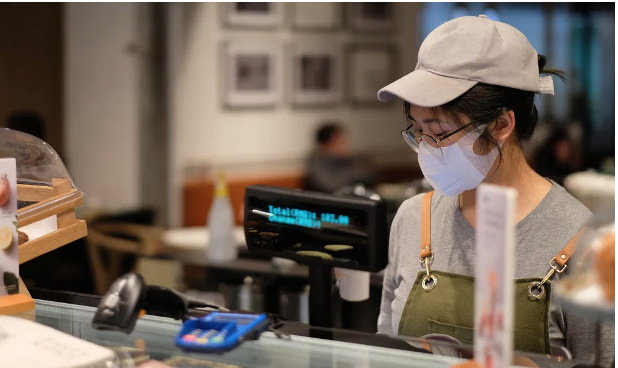CommentsPANDEMIC FALLOUT-Like many low-wage restaurant workers, Su Hua Mei and her husband lost their jobs last spring as the pandemic took hold.
With a toddler to care for, it’s been a harrowing time for this immigrant couple from China.
They speak little English and only finished high school. They’re at risk of eviction and their unemployment benefits may run out before restaurants reopen at capacity. This uncertainty “is very hard on us,” says Mei. “It creates a lot of stress. We can’t have a normal life.”
Mei and many low-income Asian Americans are grossly overlooked.
A widely cited national poll last year from the Harvard School of Public Health, NPR, and the Robert Wood Johnson Foundation reported that 37 percent of Asians had experienced serious financial problems during the pandemic, compared with 72 percent of Latinos, 60 percent of Blacks, 55 percent of Native Americans, and 36 percent of whites.
Seems like Asian Americans are doing well, right? But the survey was conducted by phone only in English or Spanish. That immediately excludes Asians with low proficiency in English — who are more likely to be poor, vulnerable, and in need.
Skewed data can yield dangerously misleading headlines — and policy outcomes.
Working-class Asians like Mei work in restaurants, salons, hotels, laundries, delivery, health care, housekeeping, construction, and factories — all low-wage industries hit hard by the pandemic. Because they toil behind the scenes and may not speak English, the average American may be entirely unaware of them.
They’re also woefully neglected by researchers, academics, pollsters, and the media. Consequently, they are overlooked by the policymakers who control the funding and services they desperately need.
They are also more likely to be victims of racist harassment or attacks, such as an 84-year-old Thai man who was killed in February during a morning walk in San Francisco. Disturbingly, violence against Asians seems to be escalating across the country, from Los Angeles to New York.
What’s more, many Asians are not included in key national statistics. Because of language barriers, cultural differences, or a lack of internet access, many may not even attempt to seek unemployment benefits or fight an eviction. So they’re not counted in either category.
Other Asians may be afraid of interacting with the government because of their immigration status. There are about 1.7 million undocumented Asian Americans, representing one in seven Asian immigrants. More than 463,000 live in California, nearly 167,000 in New York, and more than 148,000 in Texas.
The media also plays a role. Struggling, unemployed Asian Americans get just a fraction of the coverage that other racial groups get. The general lack of attention “is ridiculous given the need of the Asian community,” says Alex Milvae, legal fellow at Greater Boston Legal Services.
The misperception that Asian Americans “are doing fine” is damaging. In fact, income inequality in the U.S. is greatest among Asians, according to the Pew Research Center.
More needs to be done for Asians and others with limited English, such as hiring bilingual interpreters and creating quality multilingual websites, applications, and helplines. And surveys like Harvard’s should more explicitly highlight language and cultural barriers — otherwise they’ll leave out the people who most need help.
Grassroots organizations in Asian American communities also need more support. Since they are on the ground helping desperate people, they should have a direct line to policy makers and donors.
Vulnerable Asians like Mei and her toddler are in dire need of help — and influential statistics must not render them invisible.
(Amy Yee is an award-winning journalist. This op-ed was produced by the Economic Hardship Reporting Project and originally published by Scientific American. It was adapted and distributed by OtherWords.org.) Prepped for CityWatch by Linda Abrams.
















